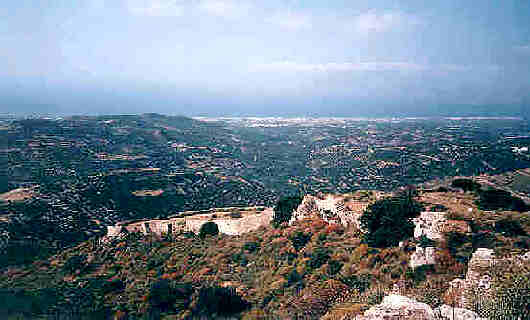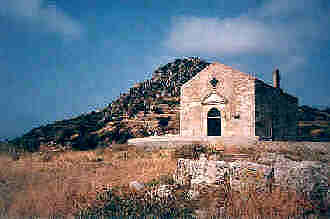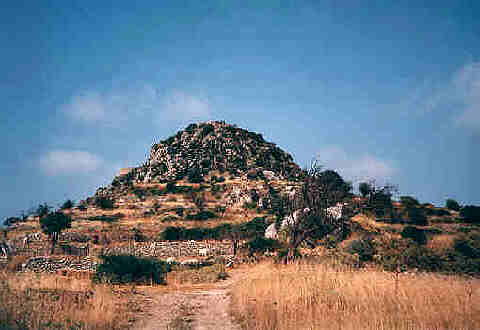 | |
| Polyrinia was one of the most important cities-states of the Western Crete.It was built amphitheatrically on top of the hill (418 m altitude) with a commanding view of both the Cretan and the Libyan sea, located 49 km from Hania and 6 km from Kissamos. The history of Polyrinia starts in the Minoan period and continues to the present day.
|
It was the most fortified city of ancient Crete and commanded all the western coast of the island. The inhabitants were probably sheepherders, something reflected to the name of the city (Poly=many, rin(e)a=sheep in Greek).The emblem of the city was the bull and the head of the bull was represented on the one side of Polyrinia's coin. |
 The church of the Holy Fathers |
On the acropolis of Polyrinia was a temple dedicated to Artemis. Stones from the temple have been used for the building of the church of the Holy Fathers, that was built in 1894 and it is located where the temple used to be. The altar of the ancient temple is part of the eastern wall of the altar of the new temple. Many stone boulders inscribed with treaties and dedications are incorporated to the walls of the church. |
| According to the legend, Agamemnon stopped in Crete returning back from Troy in order to make a sacrifice in Polyrinia. He anchored his ships in Honi (today Nopigia). When performing the sacrifice however, he saw from the temple his ships being burned by his war prisoners down to the sea and had to leave before finishing. | |
 There has been no extended excavations in Polyrinia since 1938. As a result today's visible ruins are the topmost "layer" dated to the Roman or medieval ages. The walls surrounding the top of the hill were built on the top of the previous ones. The walls have been modified in every period and have parts representing the Hellenic, Roman, Byzantine and Venetian technic.
There has been no extended excavations in Polyrinia since 1938. As a result today's visible ruins are the topmost "layer" dated to the Roman or medieval ages. The walls surrounding the top of the hill were built on the top of the previous ones. The walls have been modified in every period and have parts representing the Hellenic, Roman, Byzantine and Venetian technic. | |
 | |